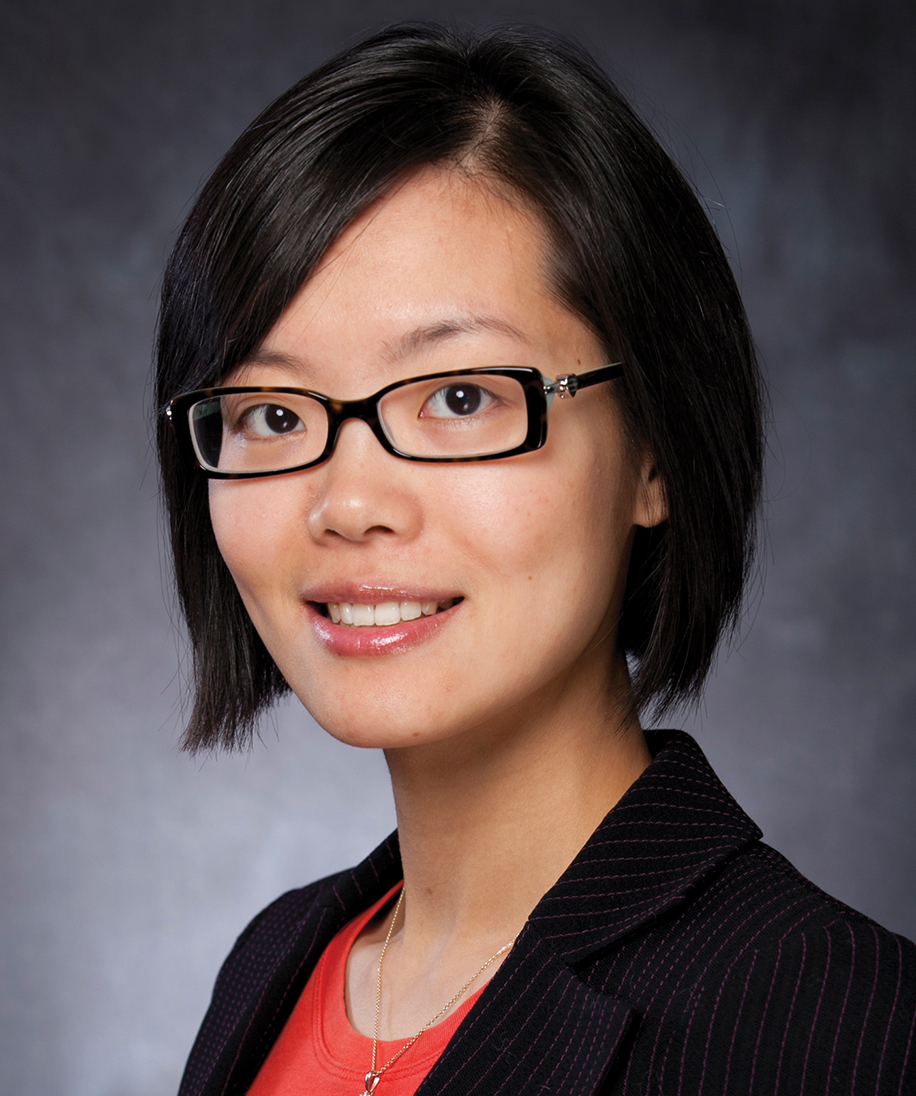Client Alert
Takeaways from Federal Circuit’s Decision in UCB v. Accord on Obviousness of Chemical Compounds
June 04, 2018
By Chad J. Peterman, Mi Zhou & Hyosang (Mark) Kim
In a recent split decision in UCB v. Accord, the Federal Circuit affirmed a finding that claims covering a pharmaceutical compound were not invalid for obviousness-type double patenting (“OTDP”).[1] The majority opinion, written by Judge Stoll and joined by Judge Bryson, found that the District Court of Delaware did not clearly err in its finding regarding no reasonable expectation of success in arriving at the claimed invention from an earlier-filed patent.[2] (Chief Judge Prost dissented.)[3] The UCB decision provides guidance on the obviousness and OTDP analyses in chemical compound cases.
I. Background of the Decision
Vimpat® (lacosamide) is an anti-epileptic drug sold by UCB, Inc. (“UCB”).[4] Lacosamide is the R‑enantiomer and belongs to a class of compounds known as functionalized amino acids (“FAAs”).[5] Several generic drug companies submitted Abbreviated New Drug Applications seeking to market generic versions of Vimpat®.[6] UCB sued for infringement of U.S. Patent No. RE38,551.[7] The asserted claims recite lacosamide with 90% or greater purity.[8] The generic drug companies stipulated to infringement but argued that the asserted claims were invalid, including for OTDP.[9] Following a bench trial, the district court found that the asserted claims were not invalid.[10]
II. The Federal Circuit’s Holding on Obviousness-Type Double Patenting
Nonstatutory OTDP prohibits an inventor from obtaining a second patent for claims that are not patentably distinct from the claims of the first patent.[11] The double patenting analysis involves determining whether the differences between the claims in the earlier-filed reference patent and the claims of the asserted patent would have been obvious to one of ordinary skill in the art.[12] This analysis is analogous to the obviousness inquiry under 35 U.S.C. § 103.[13]
In UCB, the generic drug companies asserted that lacosamide claimed in the asserted claims was merely an obvious species of the genus of compounds claimed in an earlier UCB patent filed by the same inventor.[14] The reference patent claims a genus of FAAs of a general structure and recites different chemical groups that can be placed at various positions, including R, R1, and R3.[15] Compared to lacosamide, the reference patent claims recite the same chemical group at R3, but do not specifically recite the chemical groups of lacosamide at R and R1.[16]
In alleging obviousness over the reference patent claims, the generic drug companies also cited several pieces of prior art disclosing the inventor’s own research.[17] Specifically, they cited a prior art thesis that discloses various FAAs and their potential anticonvulsant activities, including the racemate of lacosamide.[18] The prior art thesis also discloses that the racemate of lacosamide may have good anticonvulsant activities based on its structural similarities to another compound.[19] Additionally, they cited a prior art patent that discloses a genus of FAAs for treatment of epilepsy, including FAAs with the same chemical groups of lacosamide at R and R1 but a different chemical group at R3.[20]
The Federal Circuit affirmed that the asserted claims were not invalid for OTDP.[21] The majority held that the district court did not clearly err in finding that there would have been no reasonable expectation of success in placing the claimed combination of chemical groups at R and R1.[22] In reaching this conclusion, the majority held that the district court reasonably found that the prior art data did not provide sufficient insight into the effectiveness of placing the claimed combination of chemical groups at R and R1 relative to other chemical groups that could have been placed at R and R1.[23] Specifically, the district court found that no prior art disclosed any anticonvulsant data for lacosamide or any compound comprising the claimed chemical group of lacosamide at R3, and that most of the prior art studies on the FAAs only modified the chemical groups at R3 while holding the claimed chemical groups at R and R1 constant.[24]
The majority found that the district court’s fact finding was supported by the trial evidence, and thus, was not clearly erroneous.[25] In particular, the majority found that the district court’s finding was supported by testimony from UCB’s expert.[26] Regarding the prior art thesis, the majority found that the district court considered it and did not clearly err in crediting testimony from UCB’s expert, who explained that a person of ordinary skill looking at the prior art thesis would have had no interest in pursuing the racemate of lacosamide and that a person of ordinary skill would not have had a reasonable likelihood of success.[27] Regarding the prior art patent, the majority found that it indicates a large variety of possible compounds and provides for many opportunities for modification.[28]
III. Judge Prost’s Dissent
Chief Judge Prost disagreed that the asserted claims were patentably distinct from the reference patent claims.[29] She believed that the district court clearly erred in its reasonable expectation of success analysis.[30] Specifically, Judge Prost found that the district court clearly erred in dismissing the data resulting from the many tests conducted with the claimed combination of chemical groups at R and R1 and in requiring testing to provide insight into the effectiveness of the claimed combination relative to alternative substituents that could be placed at R and R1.[31] She also found that the district court clearly erred when it found that the data specific to R and R1 that existed at the time would not have led a person of ordinary skill to place the claimed R and R1 groups.[32] Additionally, and perhaps most importantly, Judge Prost found that the district court erred in not considering the prior art thesis disclosing the racemate of lacosamide, which she found to have provided a reasonable hypothesis that the racemate may have good anticonvulsant activity.[33] Judge Prost believed that certainly the prior art thesis, especially when considered along with other evidence, would have strongly contributed to a person of ordinary skill having a reasonable expectation of success.[34]
IV. Practical Takeaways
The UCB decision provides guidance on the obviousness inquiry of chemical compound claims, which is set forth as part of the Federal Circuit’s analysis on OTDP. First, the UCB decision highlights that predictability (or lack thereof) plays a vital role in the obviousness inquiry. Particularly, even in close cases where the prior art may have disclosed structurally similar compounds and arguably provided a motivation to make the necessary modifications, obviousness may not be found if there would not be a reasonable expectation of success.
In addition, the UCB decision confirms that the lack of relevant data from which a person of ordinary skill could have formed a reasonable expectation of success may support a finding of nonobviousness. The UCB decision also provides a potential roadmap that could be useful in rebutting obviousness. Specifically, in cases where the prior art discloses data regarding structurally similar compounds and potential modifications, evidence showing that the prior art data did not provide sufficient insight into the effectiveness of making the particular modification as claimed may weigh in favor of a finding of no reasonable expectation of success. Judge Prost’s dissent, however, indicates that a court has considerable latitude in its fact finding regarding whether the prior art provides a reasonable expectation of success. As such, the outcome of a close case on the obviousness of chemical compounds may depend entirely on the particular district court judge or Federal Circuit panel.
Further, the UCB decision highlights the importance of compelling expert evidence in the court’s obviousness determination. In UCB, the fact findings and appellate affirmance relied extensively on the testimony from the patentee’s expert, including whether the closest prior art and the prior art data would have provided a reasonable expectation of success. In practice, to rebut obviousness, it can be critical to develop sufficient expert testimony on all of the potential factual disputes, such as the complexity and unpredictability of the drug discovery process at the time of the invention, the lack of clear guidance in the prior art, and the lack of relevant prior art data. Particularly in cases where the obviousness allegations rely on isolated teachings from inventors’ own prior art disclosures, expert testimony explaining potential divergent paths that a person of ordinary skill would have pursued at the time of the invention could be helpful for a court to reject the hindsight analysis.
[1] UCB, Inc. v. Accord Healthcare, Inc., No. 2016-2610 (Fed. Cir. May 23, 2018).
[2] Majority Op. at 5.
[3] Dissent at 2.
[4] Majority Op. at 4.
[5] Id. at 5-6.
[6] Id. at 4.
[7] Id.
[8] Id. at 12-13.
[9] Id. at 4.
[10] Id. at 5.
[11] Id. at 15.
[12] Id. at 16.
[13] Id.
[14] Id. at 13-14.
[15] Id. at 10-12.
[16] Id. at 10-13, 18-19.
[17] Id. at 6-9, 21-22.
[18] Id. at 7-8, 21-22.
[19] Id. at 8-9, 22-23.
[20] Id. at 9.
[21] Id. at 18, 24.
[22] Id. at 18.
[23] Id. at 20.
[24] Id.
[25] Id. at 19-24.
[26] Id. at 20-23.
[27] Id. at 21-22.
[28] Id. at 22-23.
[29] Dissent at 2.
[30] Id.
[31] Id. at 4-8.
[32] Id. at 9-10.
[33] Id. at 10-12.
[34] Id. at 12.
Contributors


Practice Areas
For More Information
